Few bats are as colourful as the Hoary Bat (Lasiurus cinereus). Hoary bats have a distinctive yellow mane and their grey or cinnamon-coloured coat is frosted with white tips like “hoar-frost”, which is why they were given the name Hoary Bat. Weighing about 35 grams, they are the largest bat in Canada. They are fast, long-distance foragers that typically forage in the open, often along the edges of forests and above the forest canopy. They have a fondness for large moths. Other insects are also eaten depending on what’s available—including beetles and dragonflies. Foraging flights of up to 20 kilometres (plus return) are not uncommon.
The species roosts among the foliage of deciduous or coniferous trees, typically selecting trees that are taller than the surrounding canopy. Their colouration makes them very difficult to see among the foliage of trees. They roost alone, except for mothers roosting with their twin pups. Hoary Bats are long-distance migrants leaving Canada’s winter behind with flights that may be well over a thousand kilometres. Their migratory behaviour is poorly understood, but they likely overwinter in the southern United States or Mexico, and may undergo periods of hibernation when they reach these locations. Photo by Jared Hobbs.
Eastern Red Bat 
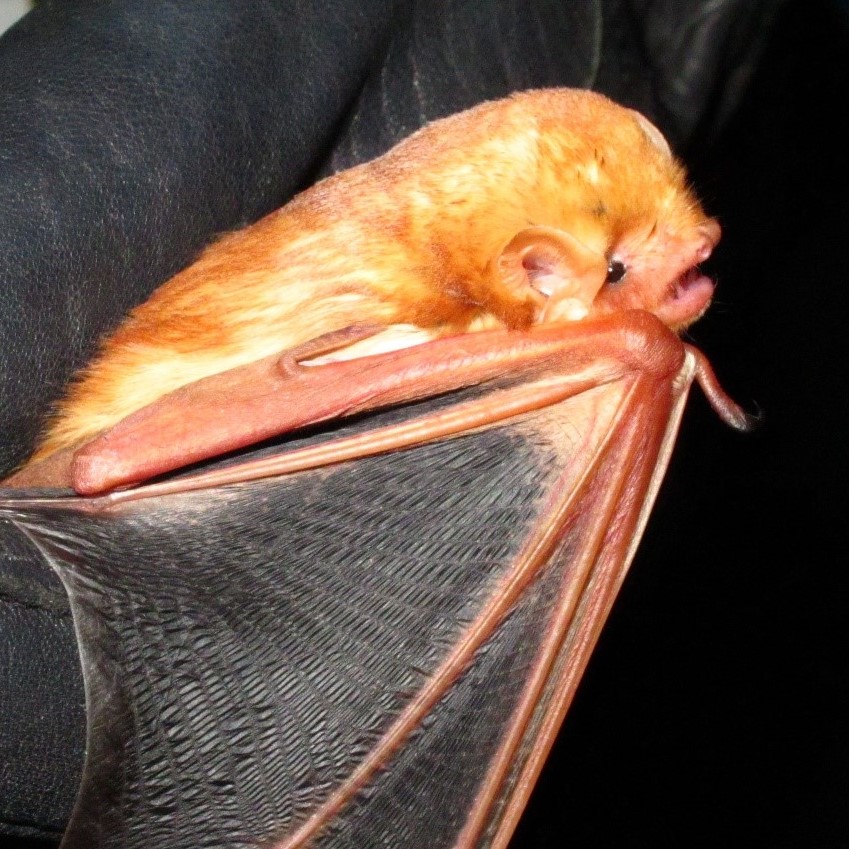
(Canada-wide)
Eastern Red Bats (Lasiurus borealis) are medium-sized bats with long, narrow wings for high, fast flights. Like many bats in Canada, moths are the main component of their diet, but they will eat lots of other insects as well. They are solitary foliage-roosting bats, typically roosting out on the limbs of branches where they are well concealed among clumps of leaves. Mothers roost in the tree canopy with their pups, which may number up to four in the eastern parts of their range (which is an exceptionally large litter size for bats). Almost nothing is known about reproduction by Eastern Red Bats in western Canada, and most observations are of males and non-reproductive females, making it uncertain whether they actually breed in the province.
The species is named for the colour of its fur: males are bright red, females are more of a grey-red. Their fur colour makes them almost invisible among the leaves of deciduous trees. This species migrates to warmer climates during the winter, likely in the southeastern United States. During cold winter weather, they may crawl into leaf litter and undergo short periods of hibernation.
This species has become more common in Alberta and BC over the past 20 years as it seemingly has expanded its range. Once believed to be rare vagrants in Alberta, recent studies, particularly as part of oil sands and wind energy projects, have revealed that the species is a common visitor of Alberta’s deciduous forests. In British Columbia, WCS Canada's NABat monitoring program has substantially expanded the range of this species as we acoustically detect it in more locations across the province. Lausen and Player 2014, Solick et al 2020. Photo by Chris Godwin-Sheppard.
Silver-haired Bat 

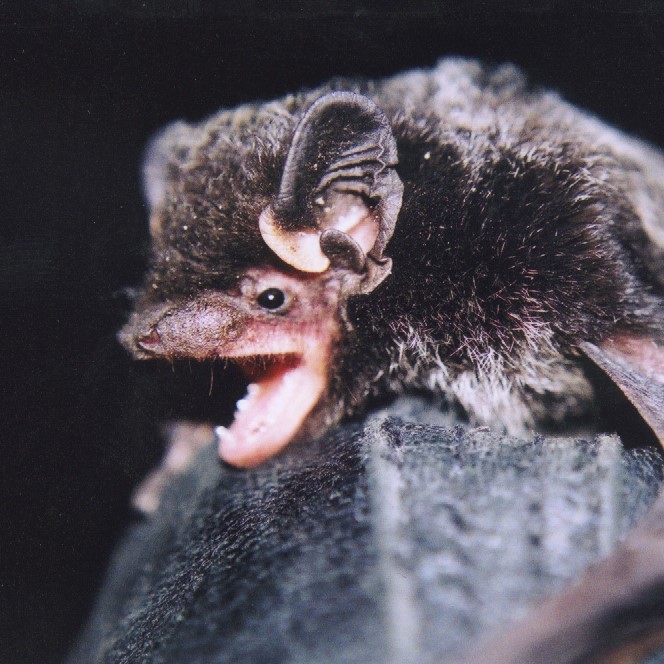
(Canada-wide)
Silver-haired Bats (Lasionycteris noctivagans) are slightly larger than Myotis species, and are typically black except for a silvery frosting to their hair (which varies in its intensity). They are adapted for fast long-distance flights, and forage in the open for moths and other insects.
Roosting occurs primarily in the crevices of large diameter decaying trees, but is more variable during migration and hibernation (in B.C. they are commonly found in firewood piles in winter). A variety of structural defects in trees may be used for roosting, including use of old woodpecker holes. Females may produce twins and groups of mothers and pups roost in small groups of up to 35 individuals (often closer to 10).
Silver-haired Bats can be long distance migrants especially in the eastern part of their range; similarly in Alberta most appear to leave the province during the winter to find warmer climates. However, this species has been confirmed to hibernate in southern British Columbia, where they occupy locations such as caves, mines, trees, and wood piles. WCS Canada has been leading the way in study on this species during winter. Through banding and recaptures, we have evidence that male Silver-haired Bats in southern BC are year-round residents, whereas many of the females are moving in from other locations.
Winter bat activity has also been detected in southeastern Alaska, suggesting they may hibernate in more locations than is currently known—more investigation is needed to understand their winter behaviour. Blejwas et al 2014. Photo by Cori Lausen.
Northern Myotis 


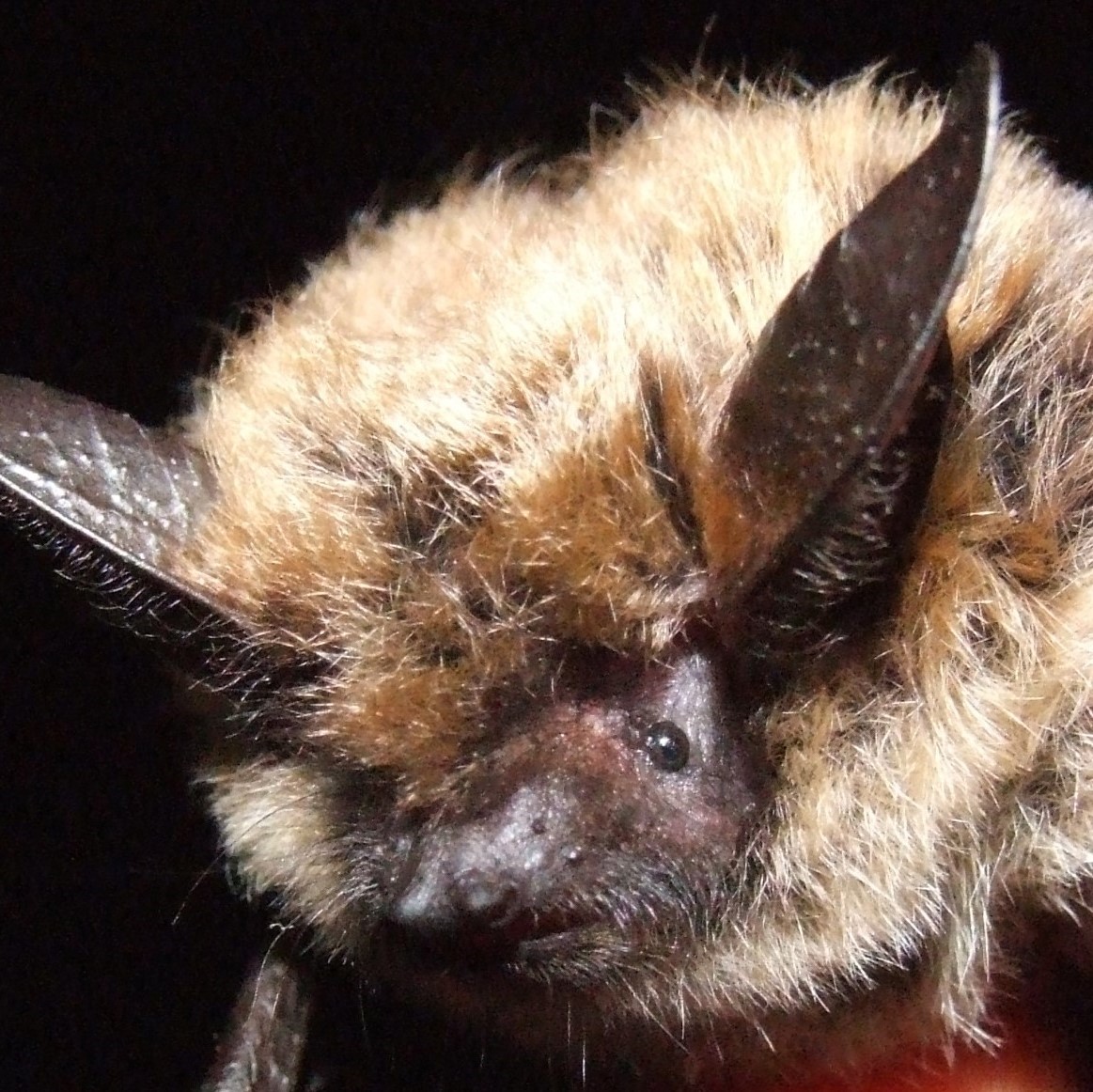
(Western Canada)
The Northern Myotis (Myotis septentrionalis) is superficially similar to the Little Brown Myotis, but has longer ears and a more pointed tragus (a projection in front of the ear canal). Northern Myotis are residents of the boreal forest and mountains. How far north this species ranges in western Canada is still not known, but they are found in the Yukon and Northwest Territories.
Northern Myotis are better able to hunt close to vegetation than the Little Brown Myotis (with which they share most of their eastern North American range). They forage by gleaning insects that rest on the surfaces of vegetation, often in the understory of old-growth forest. Mothers give birth to a single pup, and maternity colonies are typically small (e.g. up to 30 individuals), limited often by the size of the tree cavity/bark roosts. Lausen et al 2008, Lausen et al 2009, Lausen et al 2014. Photo by Cori Lausen.
Long-eared Myotis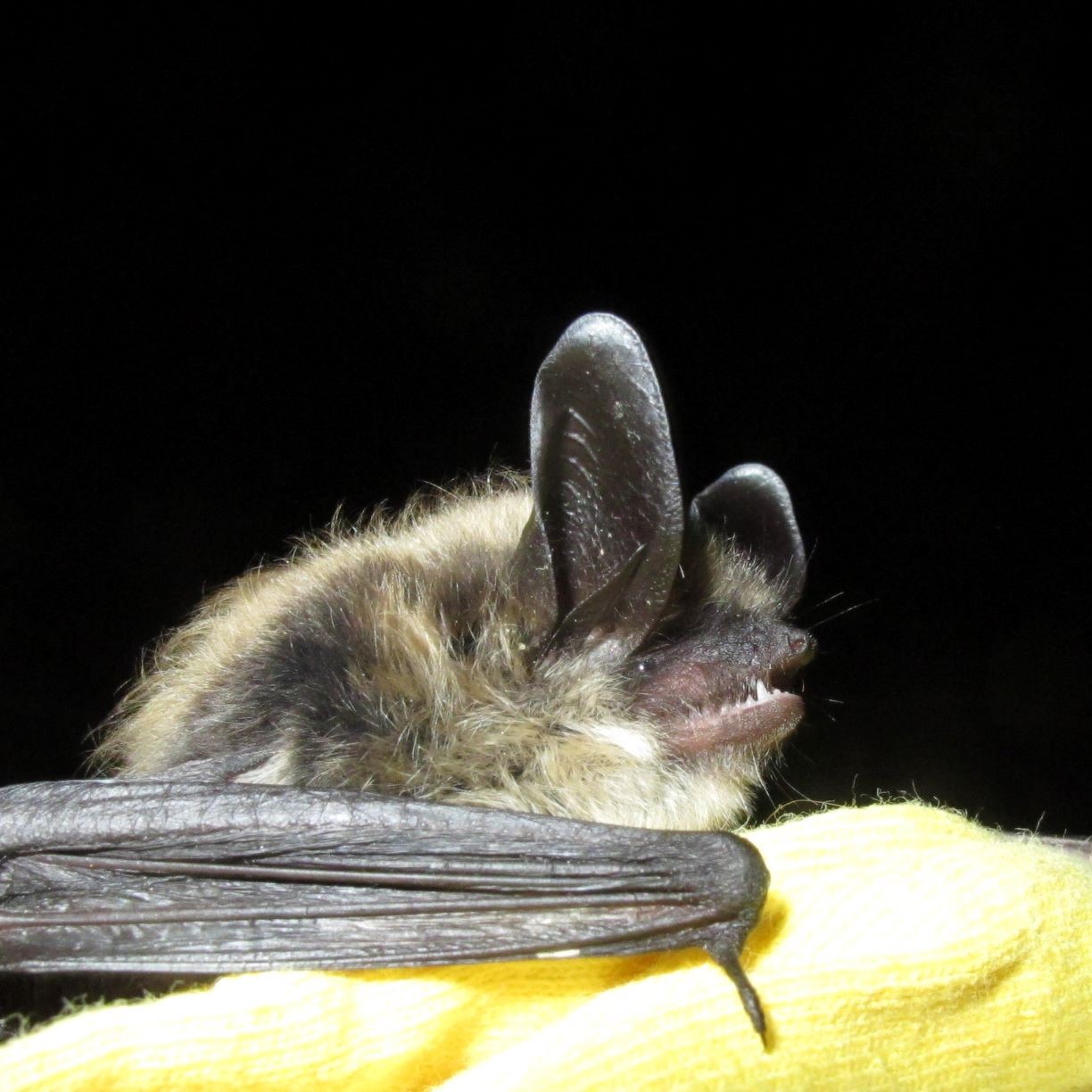


(Western Canada)
The Long-eared Myotis (Myotis evotis) are dark and have especially long ears (about 18-20 millimetres long), but without close inspection may look similar to the other Myotis species. They are particularly maneuverable, and well adapted to slow flight. This ability appears to allow them to occupy roosts that are close to the ground, such as in erosion holes, tree stumps, under rock piles, and in boulders and other rock crevices. They often glean moths and other insects from the surfaces of vegetation, allowing them to capture sedentary insects, and forage in conditions where cold temperature limits the availability of flying insects.
Long-eared Myotis are common residents of prairie river valleys, especially in the badlands, where they may roost in locations such as sandstone boulders, rock crevices, or erosion holes. They are also common in the mountains, where they have been observed roosting among the scree of rocky slopes. Roosts have occasionally been reported in buildings, but groups are generally small, making them more likely to go unnoticed. Mothers either roost alone or with 1 or 2 other individuals. Larger groups are possible, especially in buildings, where groups of up to 20 individuals have been observed.
This species was formerly considered unique from Keen's Myotis, but following a comprehensive genetics study, these species are now known to be synonymous. Lausen et al 2019. Photo by Cori Lausen.
Big Brown Bat 
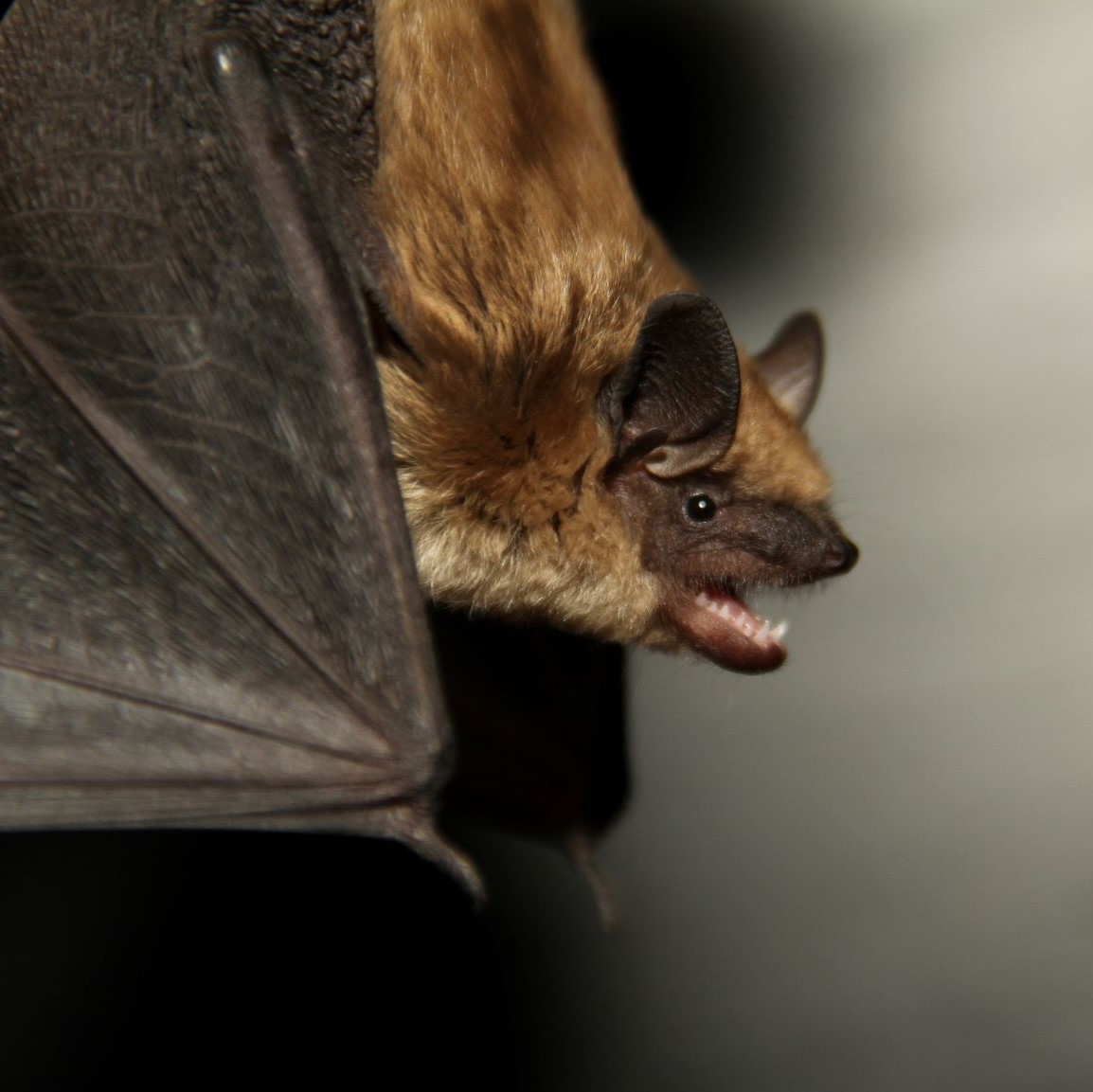
(Canada-wide)
The Big Brown Bat (Eptesicus fuscus) is one of the larger bats in Canada, typically weighing between 15-20 grams. This bat has a broad head and fur ranges from pale to dark brown. Unlike other brown coloured bats, Big Brown Bats have swollen-looking sides to their nose which may help identify them in photos where size is often hard to determine. They are common throughout agricultural communities. In Alberta, their range is sporadic in the boreal regions, but they have potential to occur anywhere in the province. Big Brown Bats have strong jaws, and are one of the most likely species to eat beetles, but diets are variable depending on what is available in their environment.
Big Brown Bats are a common resident of prairie river valleys, and a few have been confirmed to hibernate in deep rock cracks and erosion holes along these rivers. Individuals of this species may be active on warm winter days, and may be detected flying outside their hibernaculum.
Big Brown Bats roost in buildings as well as in trees, rock crevices, caves, and mines. Colonies typically consist of fewer than 100 individuals, but sometimes reach several hundred individuals. Research has shown that Big Brown Bats roosting in buildings are more successful than those roosting in natural rock crevices. Lausen and Barclay 2006, Klug-Baerwald et al 2016. Klug-Baerwald et al 2017, Lausen and Barclay 2006. Photo by Cory Olson.
Little Brown Myotis 


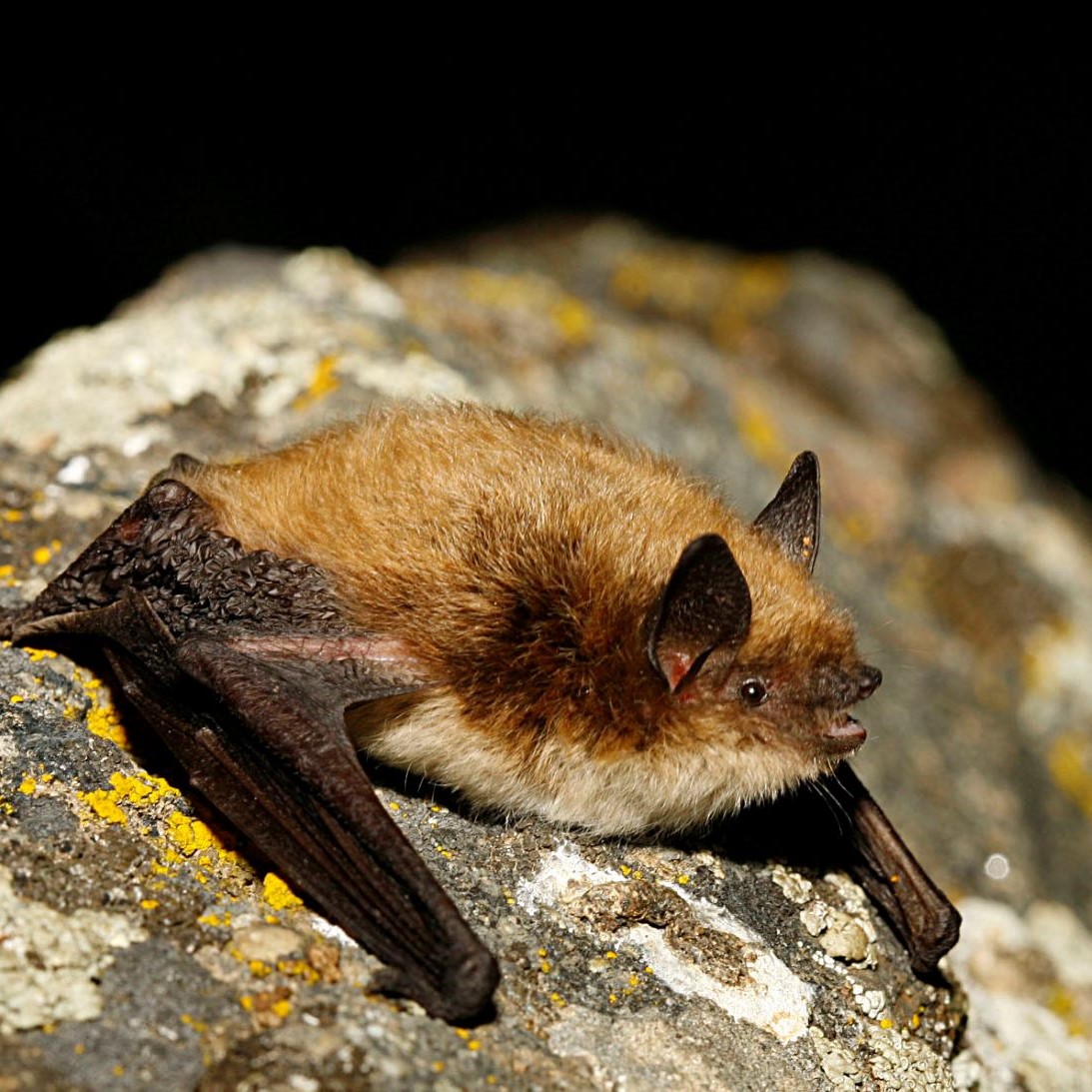
(Canada-wide)
The Little Brown Myotis (Myotis lucifugus), formerly known as the Little Brown Bat, is the most common species found throughout western Canada. They commonly roost in buildings, in groups ranging anywhere from a couple individuals up to over a thousand individuals. Other common roost structures include old trees, rock-crevices, caves, mines, bridges, and bat houses. Like many bats, their fur is a medium brown colour, although some individuals in southern Alberta may have very pale brown coloured fur. They appear similar to Big Brown Bats but are much smaller. This bat is smaller on the west side of the Rocky Mountains compared to the east. While it is not clear why this is, studies in their genetics may help over time. Lausen et al 2008.
The Little Brown Myotis is a generalist when it comes to insect consumption. Because this species forages for long periods of time close to the surface of water, it eats aquatic insects such as midges, caddisflies and mayflies in addition to many other insects. They are a common occupant of cottages and other buildings that occur near water. This species has recently been listed as federally Endangered in Canada due to the devastating impacts of white-nose syndrome in parts of North America. Photo by Jared Hobbs.
Long-legged Myotis%20-%20Cory%20Olson_2.JPG?ver=2020-02-28-225642-100)


(Western Canada)
The Long-legged Myotis (Myotis volans) is approximately the same size as the Little Brown Myotis and has a similar physical appearance. They may roost in mixed groups with Little Brown Myotis, and may be overlooked in many regions. Recent advances in DNA testing now make it possible to increase the number of reports for this species, but their use of buildings is still poorly understood. The use of buildings as roosts may be common in some areas. They are also known to roost under slabs of rock along cliff faces, and may also roost in trees. Long-legged Myotis may be more likely to forage away from wetlands than Little Brown Myotis, where they may target moths rather than aquatic insects. Photo by Cory Olson.
Dark-nosed Small-footed Myotis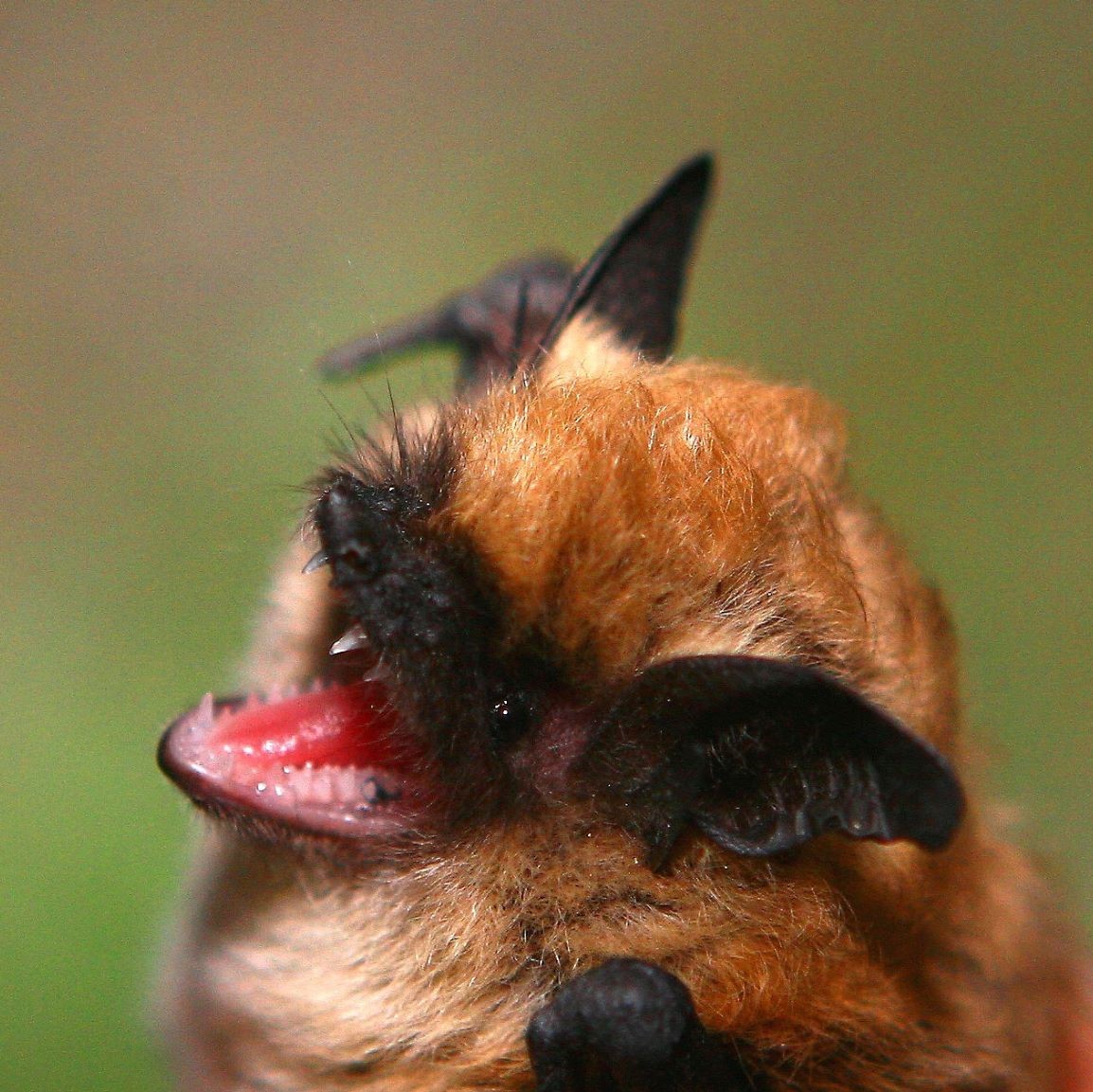


(Western Canada)
The Dark-nosed Small-footed Myotis (Myotis melanorhinus), formerly recognized as the Western Small-footed Myotis (Myotis ciliolabrum) is a very small bat, weighing only about 5 grams and is about the size of an adult human's thumb. Fur is typically blonde, and their dark skin gives them the appearance of having a black mask. They occupy a variety of arid and semi-arid habitats in western North America and Mexico, in particular the dry prairie of southern Alberta and the Okanagan Valley in BC.
They roost primarily in rock crevices, cliffs, and mudstone erosion holes. However, they appear to rely on riparian cottonwood forests as high-quality foraging habitat. They eat a variety of small-bodied insects, such as small moths and flies (including mosquitoes and midges).
Because of genetic work done by C. Lausen, it is now known that this species roosts in matrilineal family groups (i.e., related through common ancestry on their mother's side), which range from 2 to 35 individuals (more often 2-5 individuals), and even adult males in summer return to roost in their natal areas, near their mother. These groups show high fidelity to specific regions of a river system, which may only span a little over 100 metres. Therefore, the loss of a relatively small area of habitat may displace an entire multi-generational lineage of small-footed bats. Lausen 2007. Photo by G. Foli.
Yuma Myotis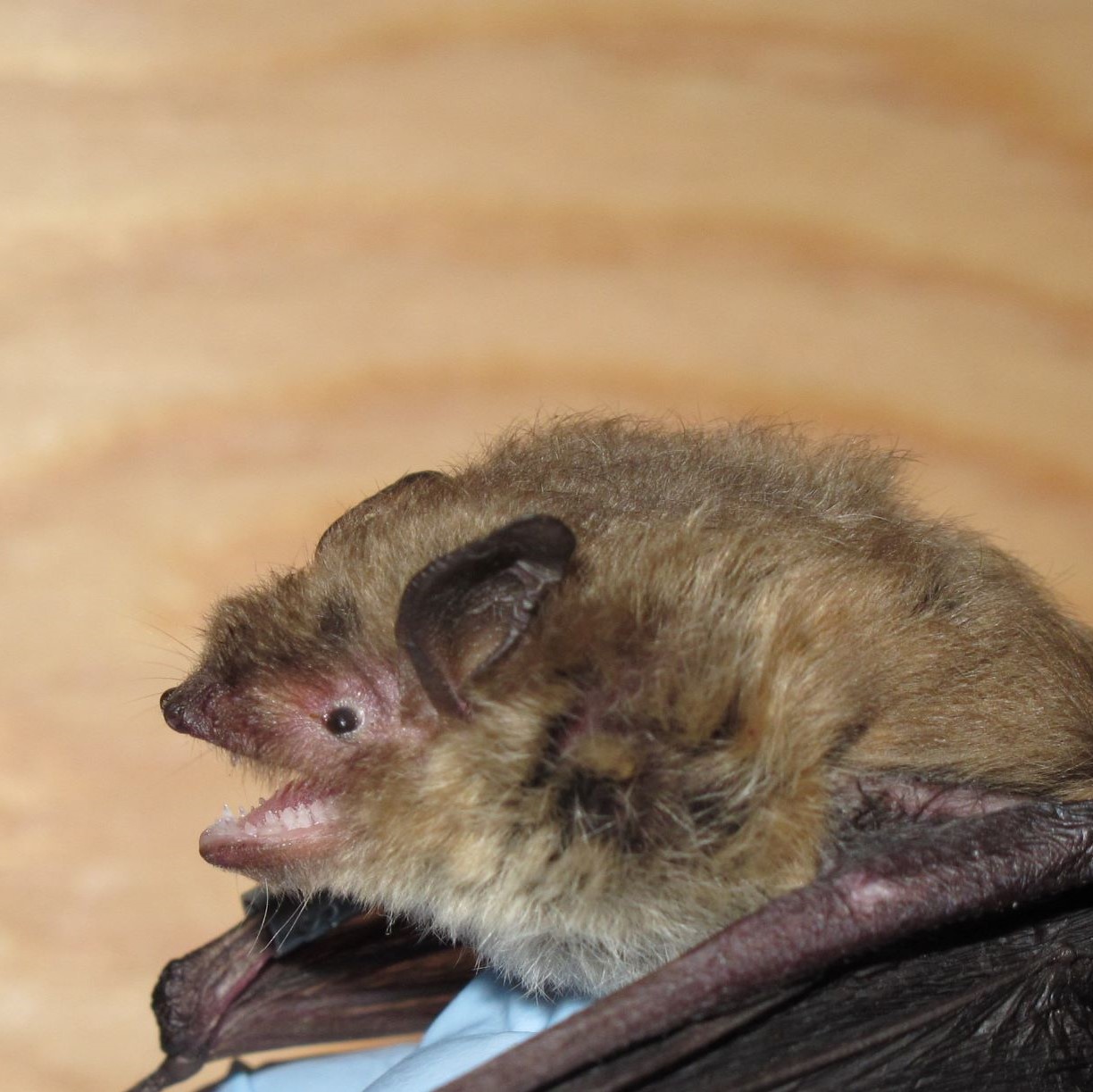

(British Columbia)
The Yuma Myotis (Myotis yumanensis)is a medium-size Myotis, pale brown to nearly black in color with fur on its underside paler. The forehead is steeply sloped, and in many ways is very difficult to tell apart from a Little Brown Myotis. This Myotis is restricted to low elevations in British Columbia where it inhabits coastal forests, Ponderosa Pine/Douglas-fir forests and arid grasslands. Building maternity roosts can be quite large and many roosts in BC are known to have thousands of adult females raising young each summer. Yuma Myotis, like Little Brown Myotis, "skims" just above calm water to feed for long period of time on aquatic insects. Photo by Cori Lausen.
Californian Myotis 
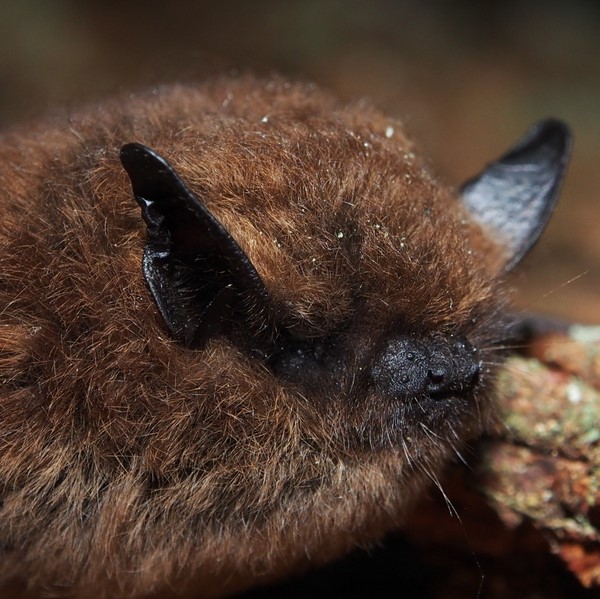
(British Columbia)
Californian Myotis (Myotis californicus)is one of BC’s smaller bat species with fur colour variation from rusty to blackish brown and is dull. It is often confused with the Western Small-footed Myotis in the interior of BC, but the Californian Myotis generally has darker fur. In BC, this species inhabits arid grasslands, humid coastal forest and montane forests. It roosts in rock crevices, tree cavities, bark spaces, mine tunnels, buildings and bridges during the day. It is particularly flexible for use of night roosts, and will use almost any natural or man-made shelter.
Winter work conducted by WCS Canada is finding this species is commonly found flying at sub-freezing temperatures. Hibernation patterns have now been documented using temperature-sensitive radio transmitters, and these date are in the process of being published. Photo by Christian Engelstoft.
Fringed Myotis 
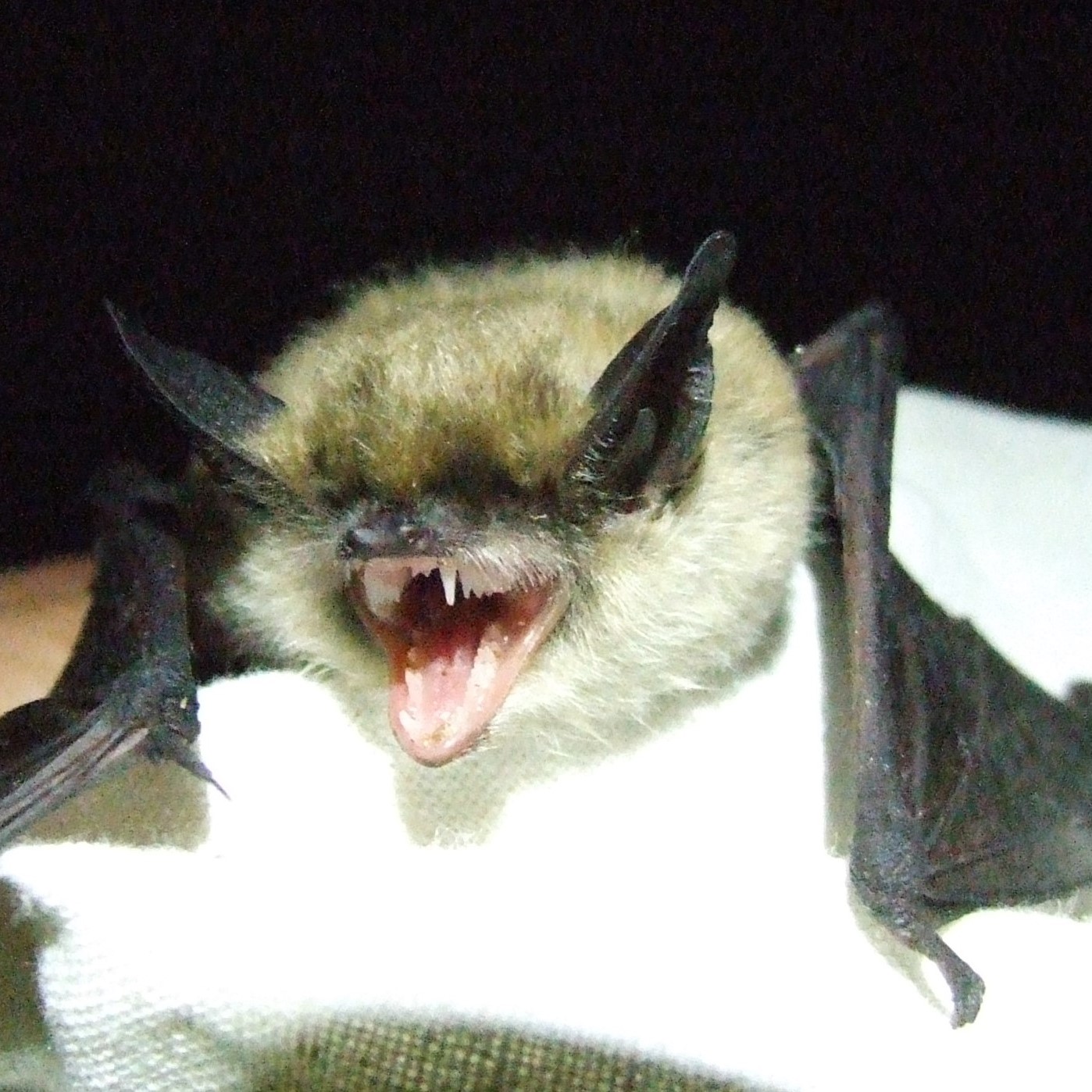
(Western Canada)
The Fringed Myotis (Myotis thysanodes)is one of the largest Myotis species in western Canada. It is known only from acoustic records in southwestern Saskatchewan, but it is found throughout central British Columbia in arid grassland habitats and Ponderosa Pine-Douglas Fir forests. The dorsal fur is pale brown with even paler under fur. The ears are long, and the outer edge of the tail membrane has a distinct fringe of small stiff hairs which gives this species of bat their name. The Fringed Myotis is a colonial bat, but very little is known about their roosting habits.
WCS Canada’s NABat monitoring has acoustically detected this species in the East Kootenay, an eastern range expansion in BC. Acoustic recordings have also been made near Trail, suggesting that this species could occur in patches of suitable habitat across BC. Unpublished genetic data by WCS Canada and partners found this species in the Metro-Vancouver area, adding to evidence from others of a coastal population of this species. Photo by Cori Lausen.
Spotted Bat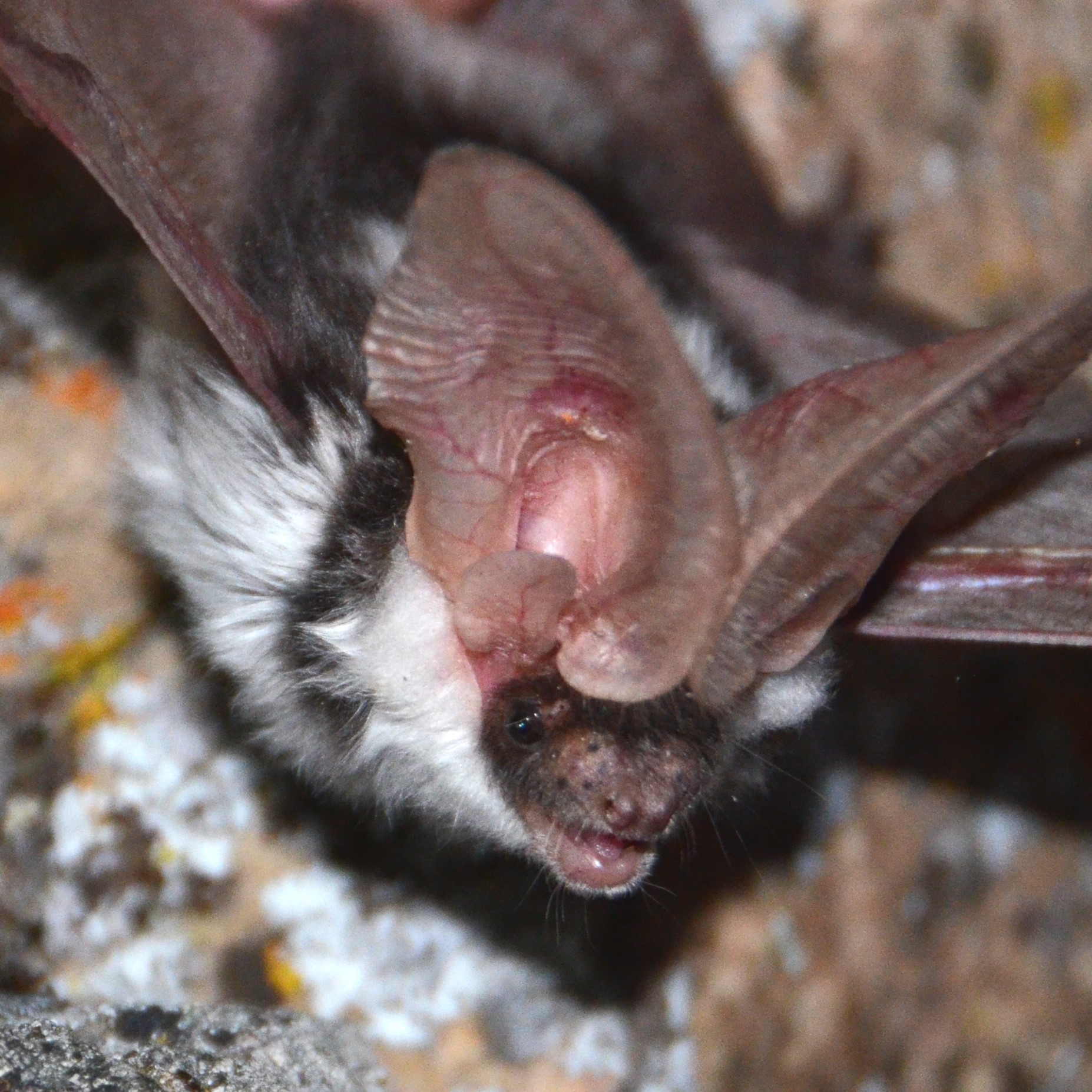


(British Columbia)
The Spotted Bat (Euderma maculatum), sometimes called the Pinto Bat has jet black dorsal fur with large white spots on the rump and shoulders making it one of the most distinct and spectacular bats in North America. Throughout western North America, the Spotted Bat is associated with arid desert terrain, particularly in the Okanagan and Fraser River Valleys. This bat echolocates at an extremely low frequency, making this the only bat in Western Canada that has an echolocation call that can be heard without a bat detector. The calls are a high-pitched metallic click that could be easily mistaken for insect sounds.
WCS Canada's NABat monitoring recently identified this species in the Skagit area, greatly expanding its range in BC. Photo by Michael Proctor.
Pallid Bat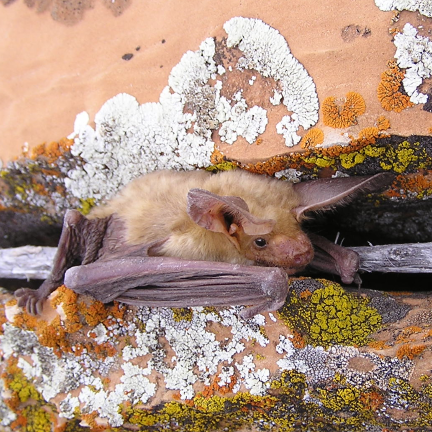


(British Columbia)
The Pallid Bat (Antrozous pallidus) is a large bat, with only the Hoary Bat being larger in Canada. As its name suggests, the Pallid Bat is pale with short, fine fur that is yellow and brown and white. They have large ears and is the only bat in BC with two pairs of lower incisors. The Pallid Bat is found in arid desert habitat, often near rocky outcrops and water and in BC is restricted to low elevations in grassland areas and Ponderosa Pine forests, with the only known records of this species in Canada in the Okanagan Valley. This bat is particularly well adapted to killing and eating large invertebrates and often gleans prey from the ground and foliage of trees and shrubs. Photo by Bryce Maxell, Montana Natural Heritage.
Townsend’s Big-eared Bat 
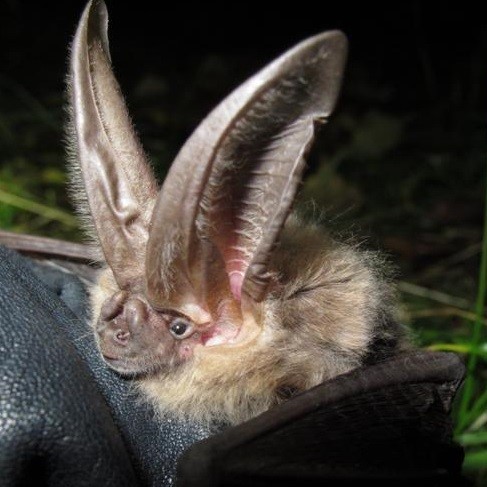
(British Columbia)
Townsend’s Big-eared Bat (Corynhorhinus townsendii) is a medium sized bat with enormous ears, about ½ its body length, and two prominent, glandular swellings on its nose. This bat is gentle, and generally non-aggressive, even when being handled. Townsend’s Big-eared Bats use caves, old mines and buildings as summer day and night roosts. Maternity colonies can be quite large. While it has long been believed that this species is particularly sensitive to human disturbance there is some evidence to suggest this is not always the case. While females have been known to abandon a traditional summer roost if disturbed, high levels of disturbance have not affected other roosts. In winter this bat species hibernates in caves and mines, generally folding their ears back beside their head in hibernation to avoid heat and water loss.
In eastern US, this species has been shown to be largely unaffected by white-nose syndrome, likely attributable to its tendency to roost in cool dry roosts where the fungus that causes this disease does not grow optimally. Photo by Cori Lausen.
Accidental Species in British Columbia:
Brazilian Free-tailed bat
(
Tadarida brasiliensis)